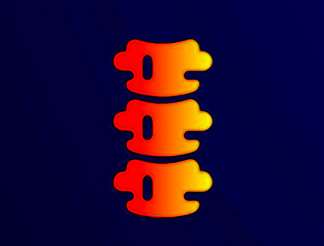Pregnancy & the Feet
Pregnancy is a very exciting time and is filled with many changes to a woman’s body – including to her feet! This leads to a number of common pregnancy foot complaints which are often overlooked because pregnancy is a busy time with so much going on.
Due to the natural weight gain and a growing abdomen during pregnancy, a woman’s centre of gravity shifts forwards. This causes a change in forces on the bones and joints when standing and walking, adding significant pressure to the knees, ankles and feet,. Furthermore, the naturally released hormones that prepare the body for childbirth also cause relaxation (loosening) of the ligaments in the feet.
Two of the most common foot problems experienced by pregnant women are flattening of the feet and arches (pronation), and swelling in the feet (oedema). These problems can lead to pain at the heel, arch, and the ball-of-foot. Many women may also experience leg cramping, varicose veins and pain from sciatica that shoots down the legs. As these are serious symptoms that can make walking difficult, uncomfortable or even painful, it is important for expecting mums to seek help for any problems that arise and learn about the best ways to care for the feet and legs.
Flat Feet (Pronation)
Flat feet, or excessive pronation, is caused when a person’s arch flattens and the feet roll inwards during walking and standing. This can create extreme stress on the soft tissues and muscles in the feet and legs, including the plantar fascia, the fibrous band of tissue that runs from the heel to the forefoot. This is why pregnant women have a tendency to develop plantar fasciitis.
Excessive pronation can also increase the strain on other areas of the feet, the calves, the shins and up to the muscles of the back. The force on these areas is further exacerbated by the natural weight gain in pregnancy, so your symptoms can worsen over time and through the trimesters.
Swelling (Oedema)
Oedema, also referred to as swelling in the feet, normally occurs in the latter part of pregnancy. Oedema results from the extra fluid pooling in the feet and legs during pregnancy as the fluid in the body becomes displaced. The enlarging uterus puts pressure on the blood vessels in the pelvis and legs causing returning circulation to slow down. When feet are swollen, they can feel uncomfortable, tight, become purplish in colour, put pressure on the soft tissues and make it difficult to fit shoes. If the swelling extends to the face or hands, a doctor should be contacted immediately.
Treatment & Prevention
The good news is that both excessive pronation and swelling during pregnancy can be managed so that you can walk more comfortably.
Pronation management starts by using good, supportive shoes with in-built arch support, however, many women also require a custom foot orthotic to help them get the most relief and feel the best on their feet. These orthotics are designed with appropriate arch support and the right ‘posting’ at the heel to adequately correct the excess pronation. Choose comfortable footwear that provides extra support and shock absorption, such as Aetrix, Kumfs, Naot, New Balance or Rockport.
Treating pronation isn’t just about getting pain relief and improving comfort, but also preventing other foot problems from developing such as Plantar Fasciitis, Heel Spurs, Metatarsalgia, Tibialis Posterior Tendonitis and Bunions.
Swelling in the feet can be minimised by:
- Elevating your feet as often as possible. If you have to sit for long periods of time, place a small stool by your feet to elevate them
- Wear well-fitting shoes. Footwear that is too narrow or short can constrict circulation
- Having your feet measured several times throughout your pregnancy. They may change sizes, growing larger or wider as your ligaments loosen. Sometimes, this change is permanent after pregnancy
- Wearing seamless socks that do not constrict circulation
- If you are driving for a long period of time, take regular breaks to stretch your legs to promote circulation
- Exercising regularly to promote overall health; walking is the best exercise
- Drinking plenty of water to keep the body hydrated. This helps the body retain less fluid
- Eating a well-balanced diet and avoid foods high in salt that can cause water retention
Swelling is normally similar in both feet. If swelling is not symmetrical, this may be a sign of a vascular problem and a doctor should be contacted immediately.
How We Can Help?
You can always BOOK ONLINE to see one of our experienced Podiatrist and Physiotherapist or simply Call Adelaide Physio And Podiatry Clinic to schedule a time that suits you.
We’ll help you find the right solution to alleviate your pain.
